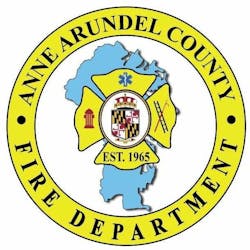Transport Issues Hit MD Safe Stations Program
As Anne Arundel’s Safe Station’s continues to grow, county public safety officials are looking at issues regarding transporting people to addiction treatment centers.
Fire Department and mental health officials stress the program’s protocol — which has firefighters and police helping those looking for treatment who walk into a county firehouse or police department — has not affected emergency response time.
But with more than 100 people each month seeking help through the program in the county, officials say they are looking at trying to how to more quickly get people to treatment.
The issue stems from the way the program accepts people as they walk into a station.
Capt. Russ Davies, spokesman for the Anne Arundel County Fire Department, said firehouses will assign a crew at a station to handle an incoming client until responders from the county Mobile Crisis Team come.
The crisis responders then assume responsibility and take the person to a treatment center once they’ve established its availability.
However, with firehouses across the county having smaller teams than the more centralized and larger police department districts, sometimes there’s only one unit at a given firehouse.
Davies said that means that if a crew has been assigned a Safe Stations patient and another emergency call comes in while they’re waiting for crisis responders, it could be forwarded to another station.
“That’s something that’s been a reality since we started it,” Davies said. “It’s the same thing that happens with any type of call we run."
So while county fire Chief Allen Graves stressed firehouses still have the discretion to respond to larger emergency calls if they deem it more important, he said he’s discussed possibly driving the patients to wherever the closest crisis responder is so to cut down on the time they spend at the station.
“I think that there’s that discussion of ‘Is it using resources?’” Graves said, but added he was “not aware of anywhere it’s caused any issues.”
According to statistics from the county Department of Health, the county has seen at least 117 Safe Station assessments per month since May.
Davies could not provide any examples of calls being diverted as the result of a Safe Stations patient but said “I’m certain that it’s happened.”
Graves said that he looks at the way departments handle the calls as time they aren’t spending responding to an overdose victim outside the firehouses.
“Even if a couple of people are tied up for a half-hour … we look at that as if it was an overdose call that we are preventing,” he said.
But he also said the department is still trying to make the system more effective in the way it handles patients.
“Can we move them to a location where Crisis Response is?” he said.
Crisis Response director Jen Corbin said it is by design so that her team members spend time developing a rapport with those looking for treatment.
“Because we’re the one that’s going to be with them for some time after” they get into treatment, she said.
Corbin added that there will be times when most of her crew is in northern Anne Arundel and it’ll affect their ability to get to a call at a southern county firehouse.
She said she’s satisfied with the way her team has responded over the past few months, saying “I think we’re maintaining so much better than we did a few months ago.”
The team has rarely been overwhelmed, she added, before promptly saying she’d just worked a double shift earlier in the week due to an influx of Safe Stations referrals.
The jump in the last five months is comparable to August of last year, when the state gave the department $287,000 in grant funding to hire more full-time crisis responders specifically to respond to Safe Stations calls.
At the time, only a few months after the program started and was designed to handle about five people a week, assessments jumped to 59 a month in August after hovering around 30 in the three months proceeding it.
Now, after an entire year of never seeing more than 91 assessments in a month, the county is seeing as many as 148 in one month, as it did in July.
State officials have expressed an interest in expanding the program statewide, with Talbot County implementing a version of Safe Stations in March.
But even in their release announcing its launch, Talbot County officials acknowledged that Anne Arundel sits in a unique position that they could not replicate.
“From the state it was clear that any Safe Station in Talbot County would have to be a modification of the Anne Arundel County model with a significant difference being that Anne Arundel has paid fire department staff and Talbot has all volunteer fire departments,” the county wrote.
Corbin said that she recognizes the system might not work the same way it does in Anne Arundel as it does in other counties, specifically pointing to the Eastern Shore and its lack of resources and smaller public safety agencies.
But she also called on Howard, Montgomery and Baltimore counties along with Baltimore city to “step up and do a little more” with their crisis response systems.
She said 164 of the 1089 people who have utilized the program through September were from outside the county.
“I think if people step back and look at what counties have, there is the ability,” she said.
___ (c)2018 The Capital (Annapolis, Md.) Visit The Capital (Annapolis, Md.) at www.hometownannapolis.com Distributed by Tribune Content Agency, LLC.
